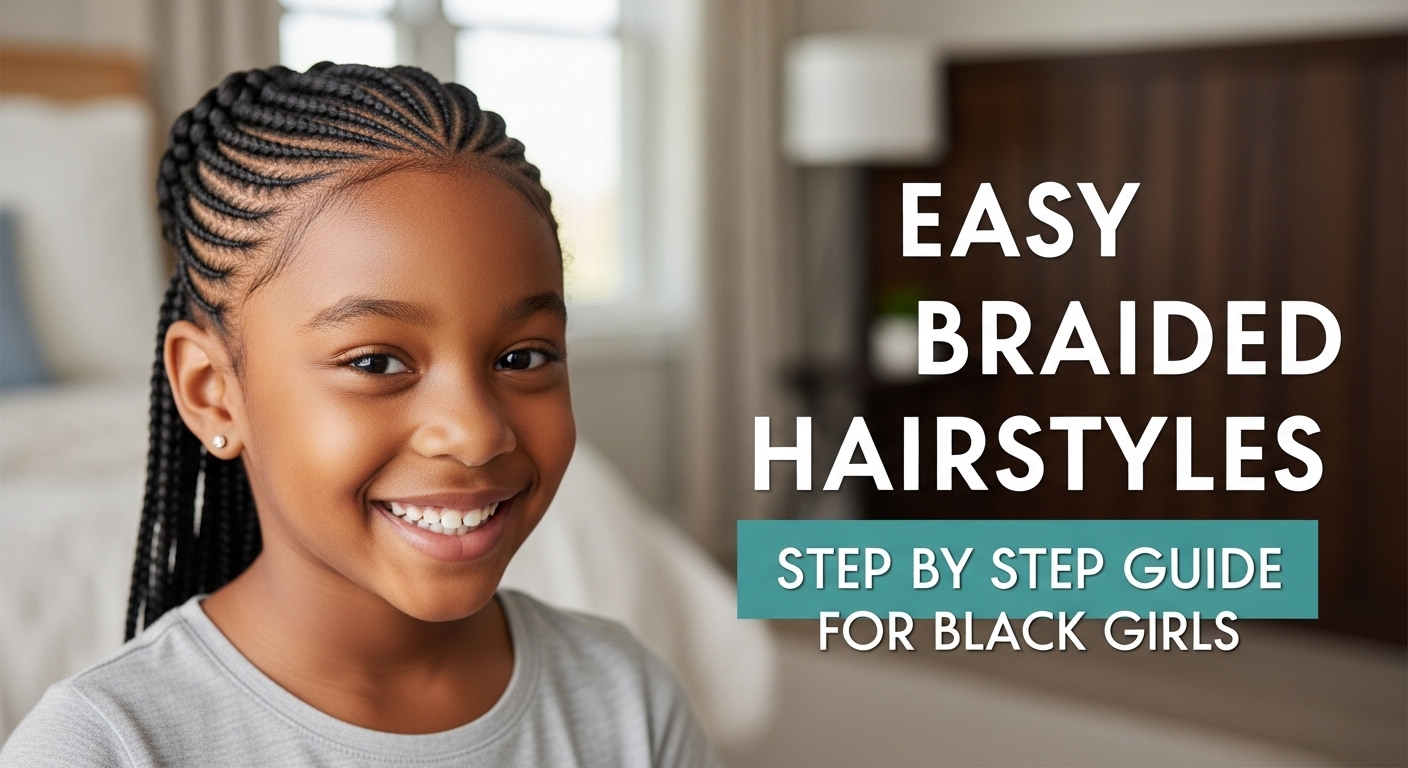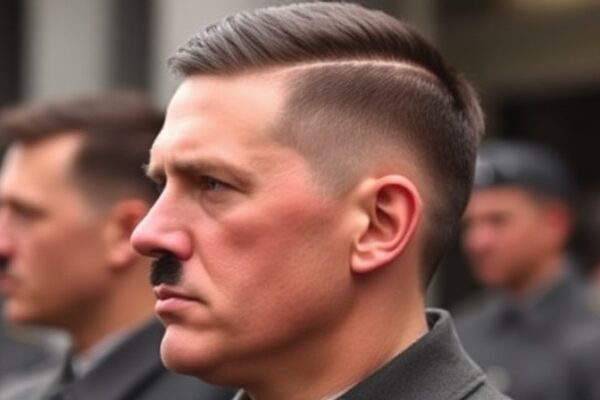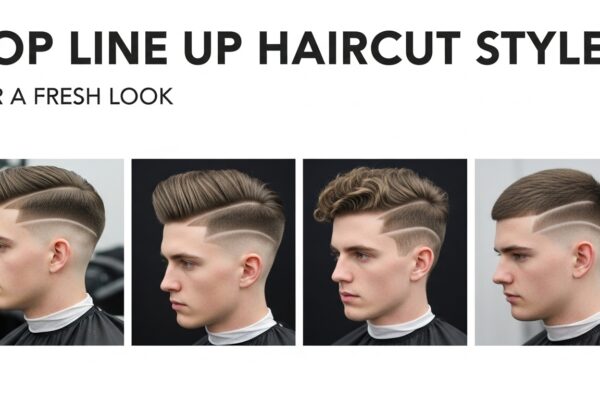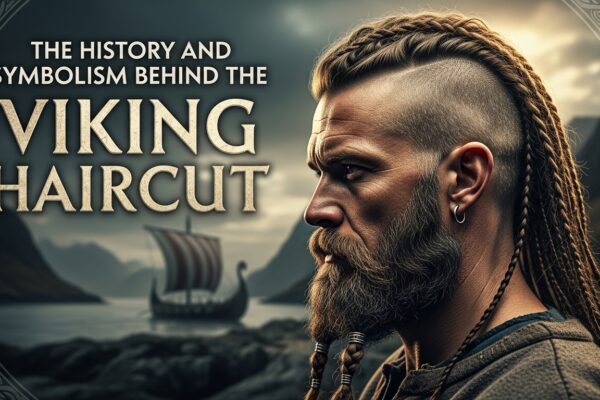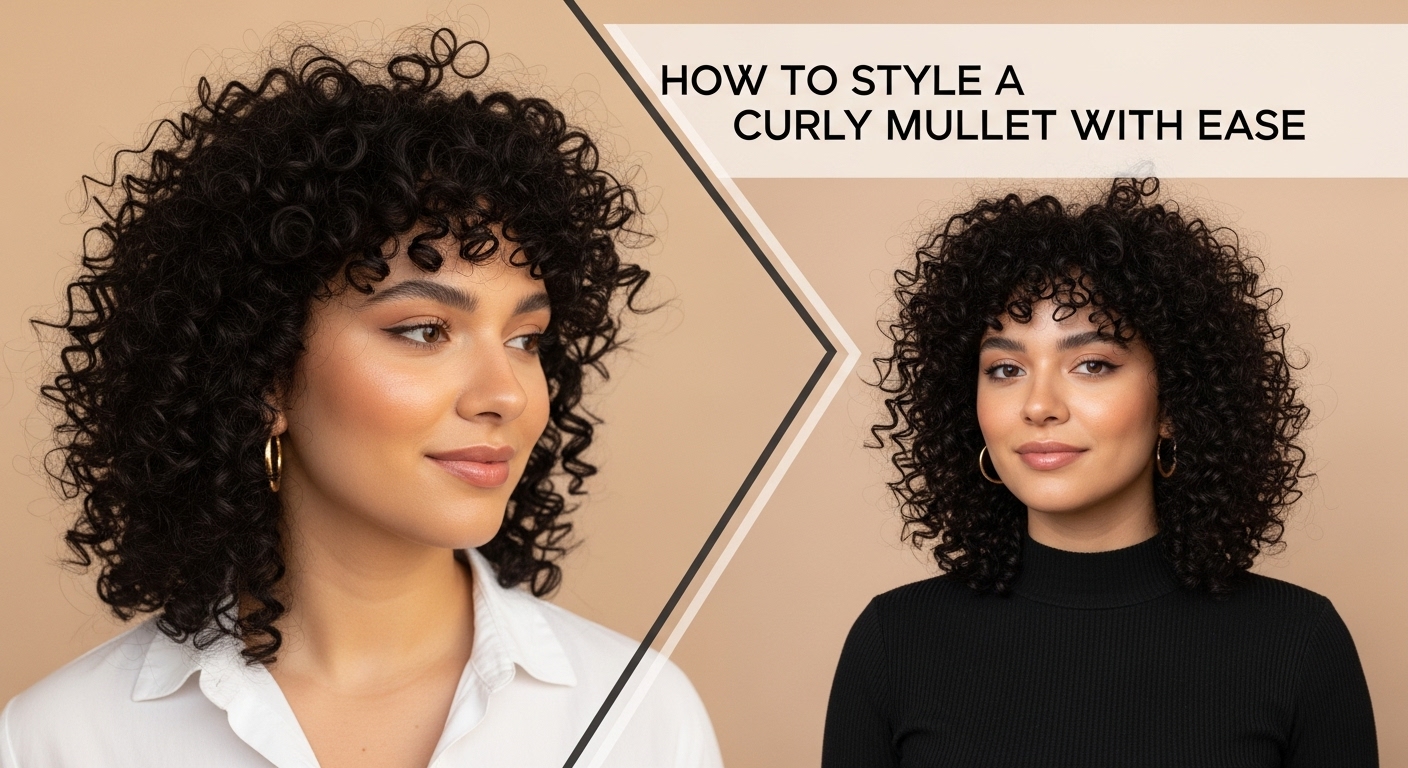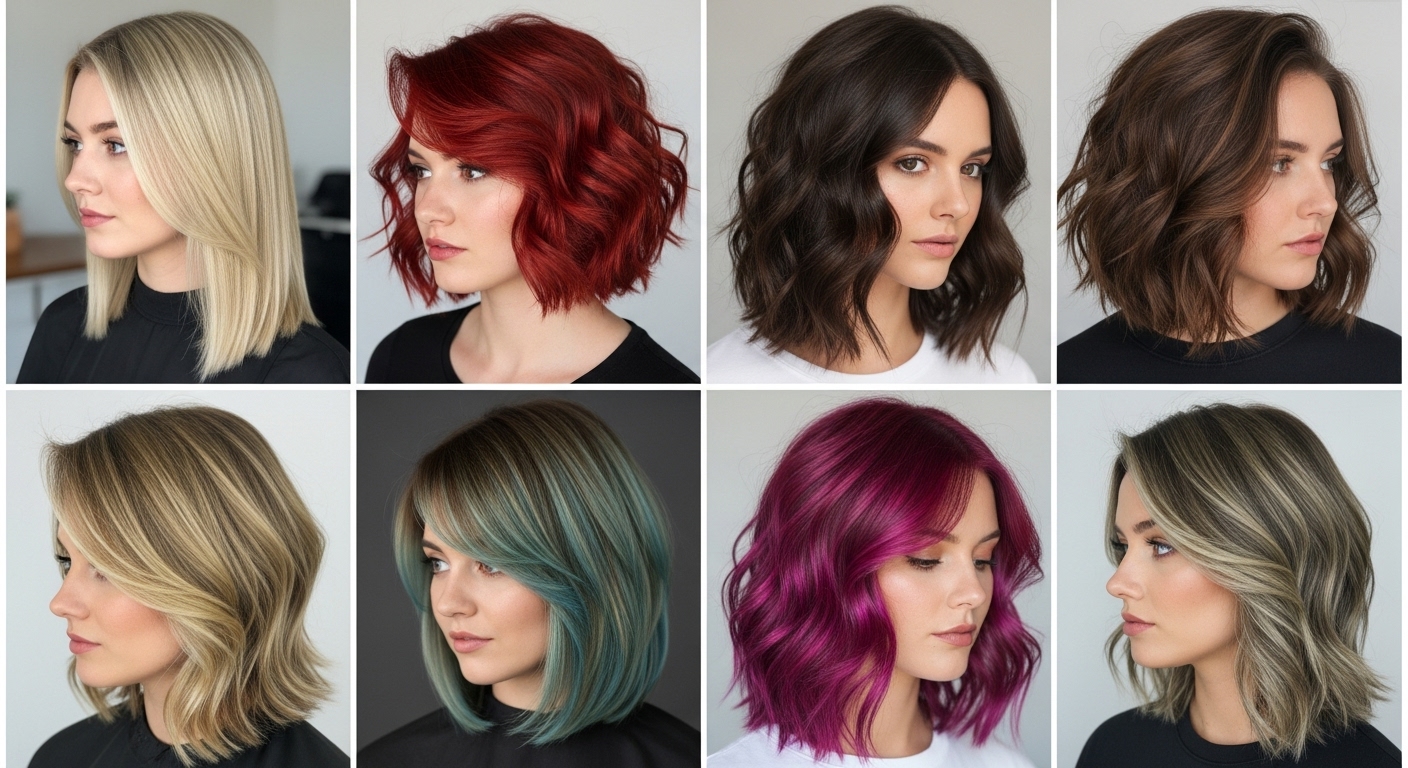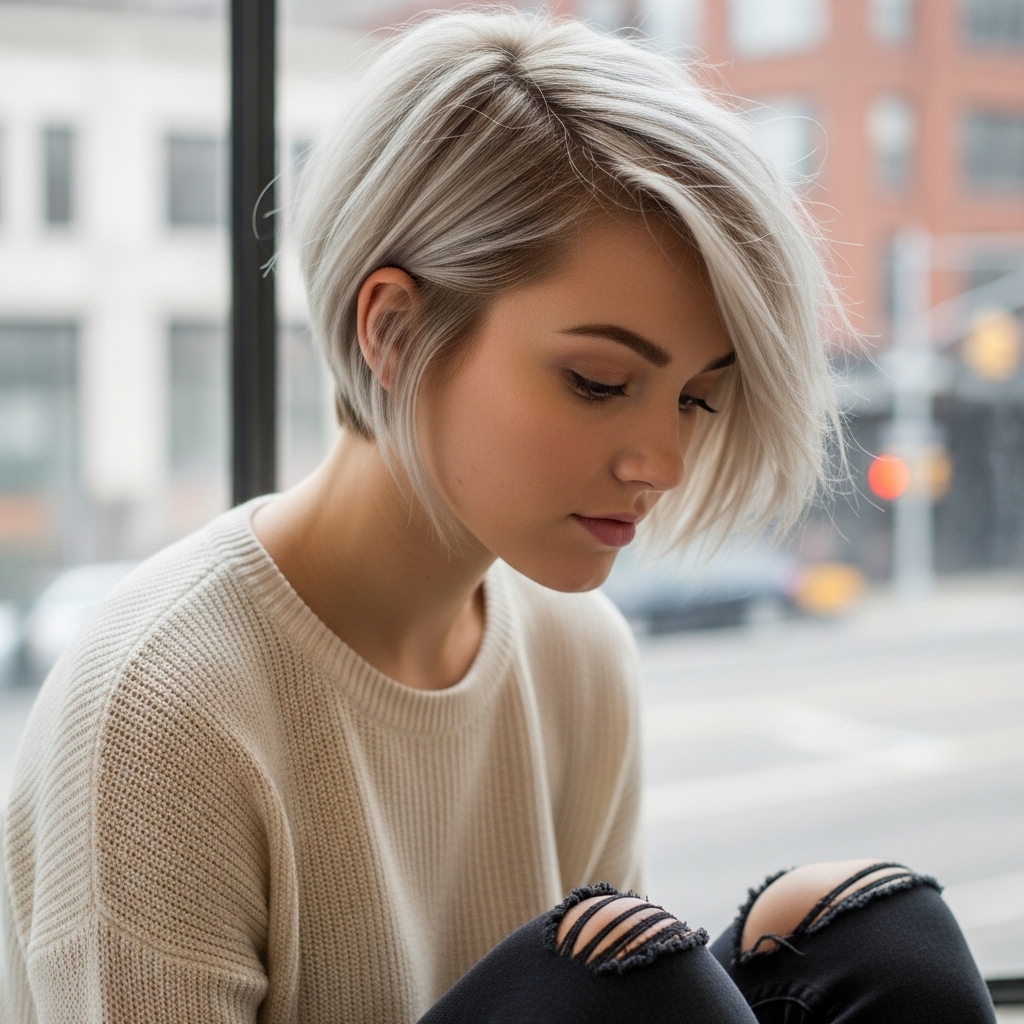Braids have never been just a way to change your hair. They represent memory, culture, function, and creativity at the same time. Specifically, for Black girls, braided hairstyles could be compared to a second language. Besides that, braids not only help in hair care but also last long both in school and summer days and can be the wearer’s silent mode of expression.
This is not at all a perfect and fancy tutorial blog that you usually find. It may be more comparable to a stroll through different braided styles, how to get them done, and little unspoken things that might have crossed your mind but you have not thought of saying out loud – like the heaviness of the braids, or the itchiness of your scalp after the first night.
Why Braids Matter for Black Girls
Braids are protective. That’s the primary factor. A braid is like a wrap for natural hair that doesn’t allow it to get damaged by the frequent combing, weather conditions, or hairstyling. Braids are also flexible in nature- they can be stylish at the peak of fashion or just regular, school approved or the talk of the town like a trend setter.
Moreover, there is history. Braids come from African traditions, in which patterns and styles were very communicative. At the moment, the message may be different but the main idea is still the same—braids are a means of identification, a source of visual appeal, and a practical solution to daily problems. Modern styles, like the curly hair mullet, also draw inspiration from cultural expression, blending heritage with contemporary fashion.
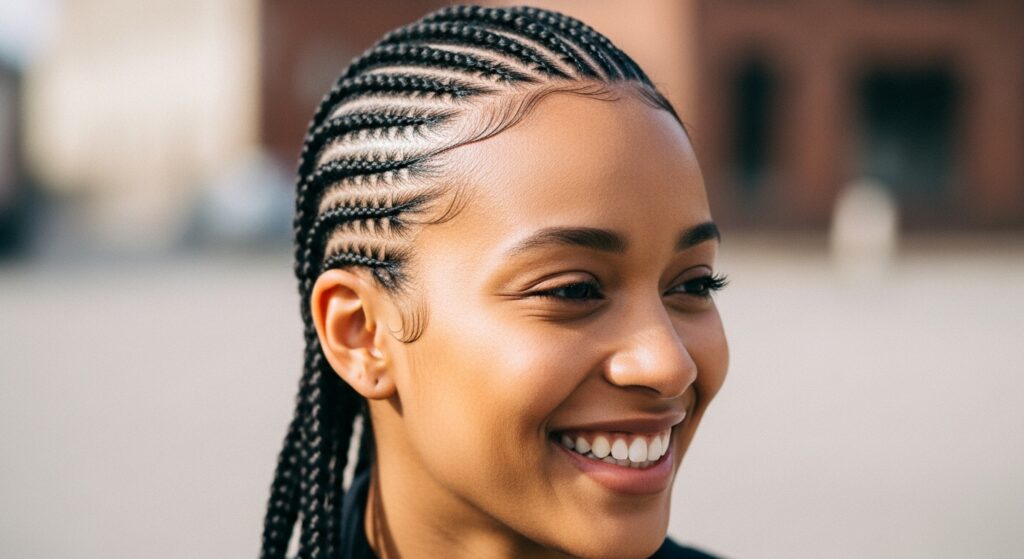
Different Types of Braided Hairstyles
The main thing here is that when people refer to braided hairstyles they are not talking about only one style. The term encompasses a vast range of variations. Some are really quick, while others can take hours. Some of them are quite heavy, while the rest are light and airy.
Box Braids
In all probability, the one that is usually the most recognizable is box braids. The hair is sectioned into small squares and then braided down with the extensions. They tend to have a very long life span of normally 4 to 8 weeks.
Box braids are the best option if you do not want to style your hair every day. But it is going to take a while. The time can be between 3 and 7 hours, depending on the size of the box braids.
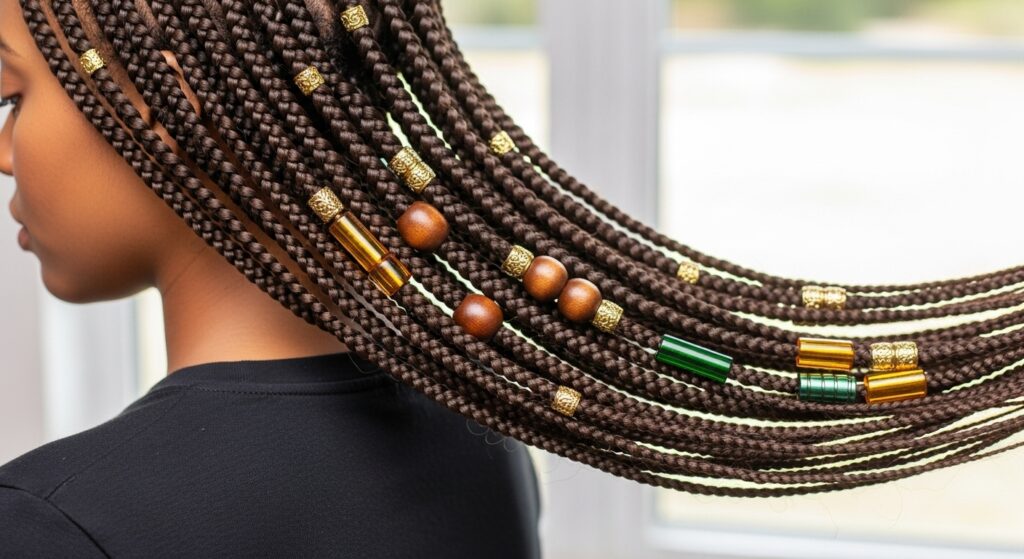
Cornrows
Flat braids that are braided directly onto the scalp. They can be as simple as the straight-back styles and as intricate as the zigzags or swirls pattern. In general, cornrows are less time-consuming and more manageable for kids.
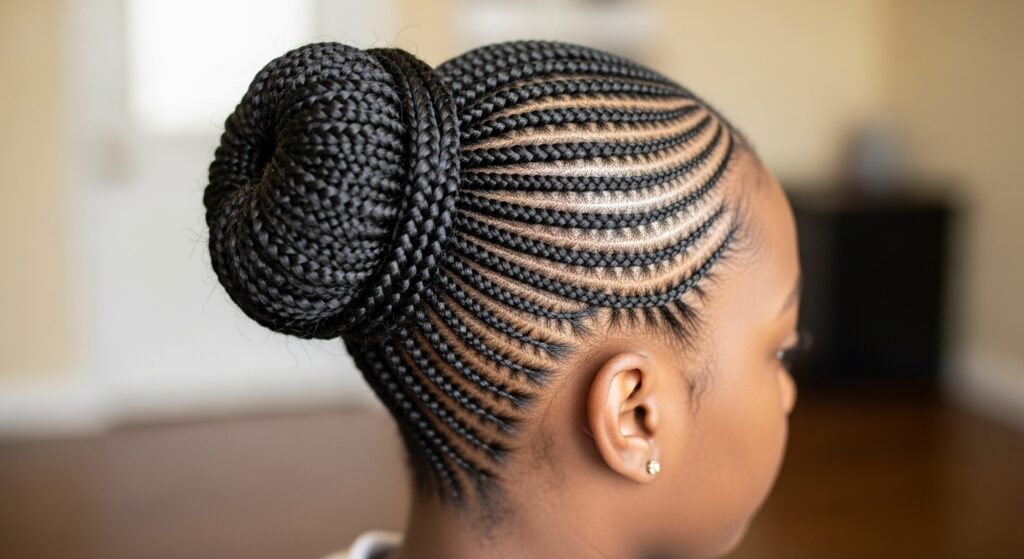
Knotless Braids
One of the alternative ways of box braids. The hair is fed into the braid little by little which makes them lighter and more comfortable on the scalp as there is no starting knot. Good for relieving tension.
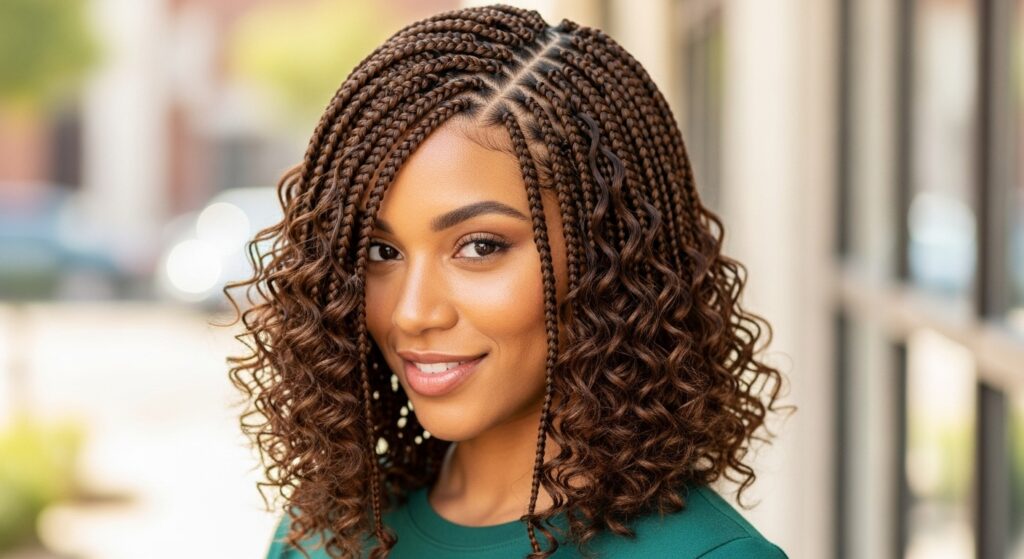
Feed-in Braids
Most used for those silky ponytails or layered cornrow styles.
The process of gradually adding hair extensions (fed in) is done to create a natural progression. The way they turn out is very smooth and they are less bulky at the start of each braid. This technique also pairs beautifully with shoulder length haircuts, offering a balanced look that’s stylish yet easy to manage.
Braided Buns and Updos
In some cases, braids are the main part of the bun, ponytail, or crown. These hair styles are more like fashion accessories rather than functional that still can protect the hair. Great for an event like a wedding.
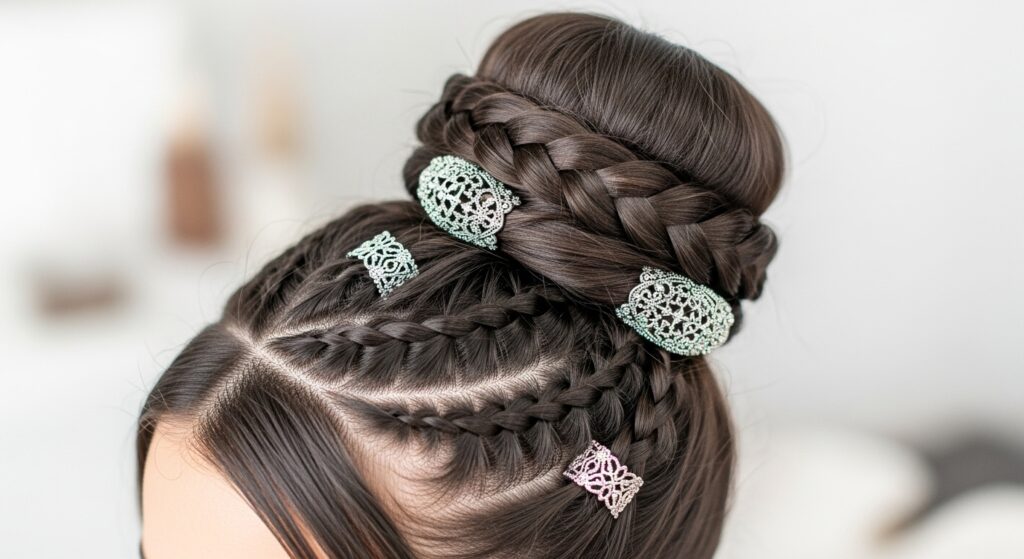
Braid Types and Time
| Braid Style | Average Install Time | Lasts For | Best For |
|---|---|---|---|
| Box Braids | 4–7 hours | 4–8 weeks | Low maintenance |
| Cornrows | 1–3 hours | 1–2 weeks | Kids, quick styles |
| Knotless Braids | 5–8 hours | 4–6 weeks | Lightweight option |
| Feed-in Braids | 2–5 hours | 2–3 weeks | Sleek ponytail looks |
| Braided Buns/Updo | Varies | Days–2 wks | Events, special days |
Step by Step: How to Do Basic Braids
Braids do not necessarily require a trip to the salon. Some braids can be done at home, especially smaller protective styles. Here’s a loose step-by-step:
- Prep the hair. Clean, moisturize, detangle. Braids last longer when the base hair is healthy.
- Part the sections. Use a rat-tail comb for neat parts. Clips help keep the rest of the hair out of the way.
- Add product. Just a little of hair butter, an edge control, or gel for smoothness.
- Start the braid. For each section, take three parts and interweave them. At the same time, keep the braiding tight but not too tight—scalp health matters.
- Secure the ends. You can do it by dipping in hot water if extensions are added, or just braiding to the tip for natural hair.
It seems easy, but the truth is that practice is the main thing. Your first attempts might be a bit uneven, which is also acceptable.
Hair and Scalp Care While Wearing Braids
This section is the least appreciated. Although a new set of braids might look gorgeous, an ignored scalp can lead to itchiness, flaking, and even hair loss.
- Moisturize the scalp. Use lightweight oils like jojoba or tea tree sprays.
- Wash gently. Diluted shampoo or scalp sprays keep things fresh without undoing the braids.
- Don’t keep them in too long. 6–8 weeks max for most braids. Beyond that, tangling and breakage risk goes up.
Braids for Kids vs. Teens vs. Adults
Braids are done differently from one age to another.
- Kids: Small sections of hair and light braids. Beads are fashionable but make sure they are not heavy. Cornrows or small box braids are popular.
- Teens: Knotless braids, creative feed-in designs, and longer styles are mostly used.
- Adults: Braids are characterized by versatility. Braided buns, which are suitable for the office, as well as box braids up to waist-length.
Styling Tips and Variations
- Add-ons like beads and cuffs can help make your hair more unique and eye-catching.
- The use of colored extensions becomes popular especially when the color is either burgundy or honey blonde.
- The curly pattern at the end instead of using the blunt tips gives a gentle and soft appearance of the hair.
- The braids in the half-up, half-down style are less heavy on the neck as they can be parted and less of the length is showing.
Final Thoughts
Braided hairstyles for Black girls are not just about fashion. They are functional, deeply-rooted in tradition, and quite adaptable to almost any type of lifestyle.
Some of them may take hours and others just minutes, but they all share the same feature-protection for natural hair and the personal style can be visible through them. If you are a first-timer, then you should be really patient.
The palpating will become familiar, the scalp will get accustomed and, at last, it will be just like any other routine.
FAQs
1. How long should braids stay in for Black girls?
In general, 4 to 8 weeks is the time period depending on the style. If the braids are kept for a longer period of time, it may lead to tangling or breakage.
2. Are braids good for natural hair?
Sure! Braids are definitely one of the best protective styles for natural hair since they are not exposed to friction or tangling during the usual hair care routine.
3. Do braids hurt at first?
Usually, a certain degree of tightness is felt but if there is a pain or bumps are forming, it means that the braids have been made too tight. Consequently, scalp injury can occur.
4. Can kids sleep with braids easily?
Yes, they can but still, the use of a satin bonnet or a pillow is advised in order to prevent frizz and to retain the style for a longer period of time.
5. What is the difference between box braids and knotless braids?
The fundamental difference between knotless braids and box braids is that the hair extensions are slowly blended into the natural hair in the former to give a lighter and more natural appearance.

James Tony covers everything from classic cuts to trendy styles, helping readers choose the right haircut and maintain healthy, stylish hair. He’s known for his deep dives into hair textures and face shapes, making it easier for anyone to find the perfect look. James believes a good haircut is the first step to great confidence.

